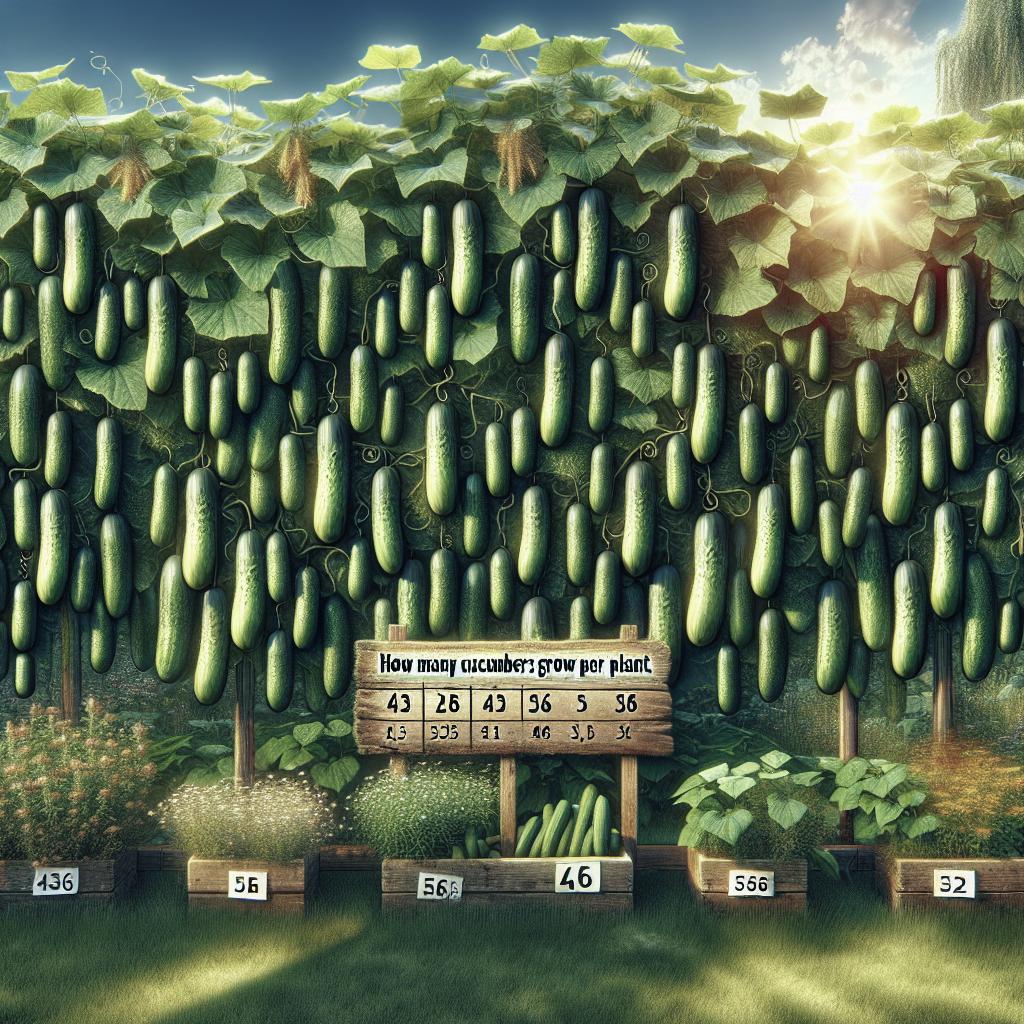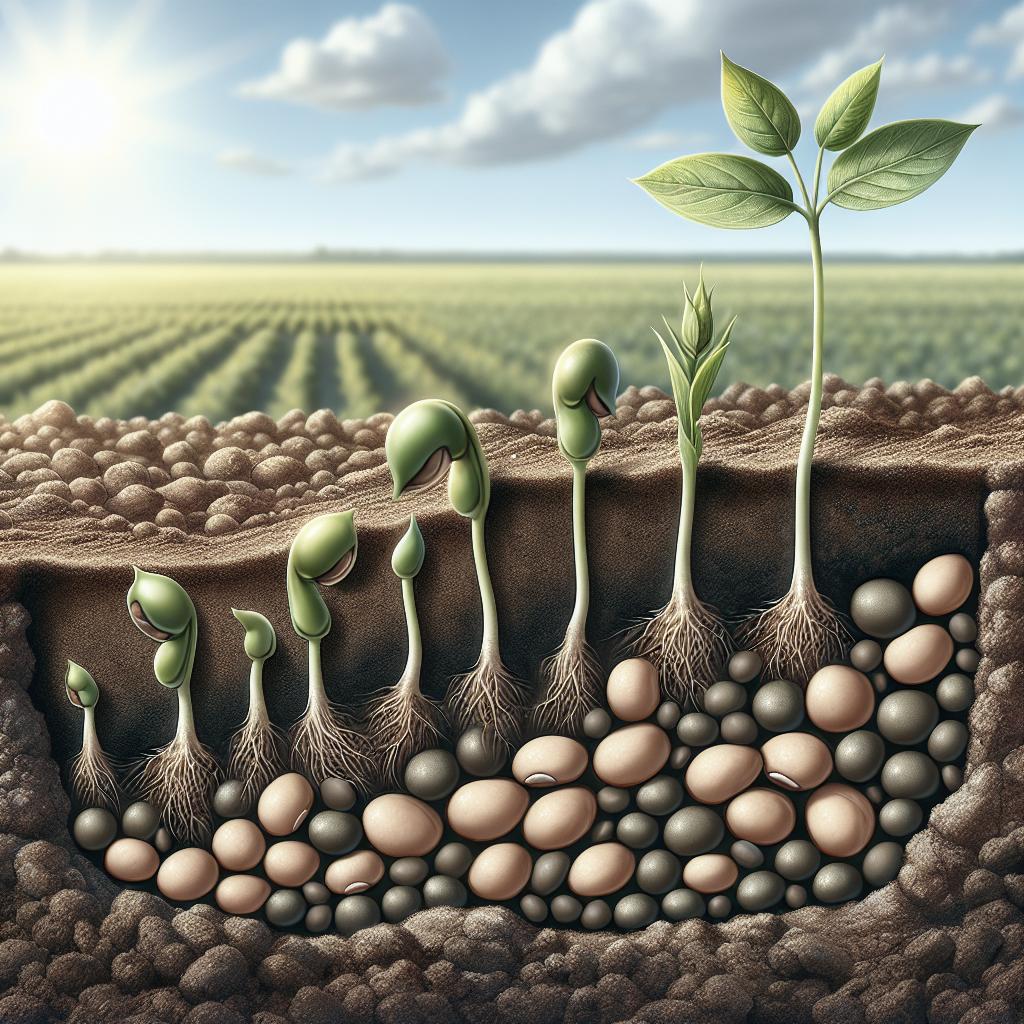Cucumbers are a popular vegetable among home gardeners due to their crisp freshness and versatility in the kitchen. Whether for salads, pickling, or just as a crunchy snack, the yield of cucumber plants can vary considerably based on multiple factors. This article will explore what determines the number of cucumbers per plant, common gardening mistakes that might reduce yield, and practical steps you can take to maximize your cucumber harvest. From understanding varietal differences to the importance of regular harvesting, we’ll delve into the essentials that every cucumber grower should know.
What Determines the Number of Cucumbers Per Plant?
Varietal Differences
The type of cucumber plant you choose has a significant impact on your overall yield. Generally, there are two main types of cucumbers: slicing and pickling. Slicing cucumbers are usually larger and require more space, whereas pickling cucumbers are smaller but often yield more fruit per plant. For example, the ‘Cool Breeze’ variety is known for a high yield of small, crunchy cucumbers perfect for pickling. Hybrid varieties have also been designed to maximize yield and resistance to diseases. Selecting a hybrid variety known for high productivity can often result in a greater number of cucumbers per plant compared to heirloom varieties, which sometimes prioritize unique flavors over quantity.
Proper Nutrients
The availability of essential nutrients heavily influences cucumber production. Cucumbers need a balanced diet of nitrogen, phosphorus, and potassium to thrive. Nitrogen is essential for leaf and stem growth, phosphorus aids in root development and fruit setting, while potassium contributes to overall plant health and disease resistance. Often, gardeners can benefit from conducting soil tests to determine nutrient deficiencies. Adding compost and appropriate fertilizers can enrich the soil. Employing a slow-release fertilizer can ensure that nutrients are consistently available to the plants throughout the growing season, promoting continuous fruit production.
Regular Harvesting
Regular harvesting is crucial to maintaining high cucumber yields. When cucumbers are left too long on the vine, the plant diverts energy to seed production rather than producing new cucumbers. Harvesting cucumbers when they are the ideal size not only ensures better taste and texture but also encourages the plant to produce more fruit. It’s recommended to check your cucumber plants daily during peak growing season. Frequent harvesting also helps in monitoring plant health and promptly addressing any developing issues such as pests or diseases.
Gardening Mistakes That Result in Fewer Cucumbers
Several common gardening mistakes can drastically reduce the number of cucumbers your plants produce. One major mistake is overwatering or underwatering. Cucumbers require consistent moisture, and fluctuations can stress the plants, leading to lower yields. Additionally, overcrowding plants can limit airflow and sunlight, critical components for growth and fructification. Moreover, neglecting crop rotation can result in soil depletion and increased susceptibility to soil-borne diseases. Cucumber plants grown in the same spot year after year are less productive and more likely to encounter problems like root rot. Finally, improper pest management can severely affect cucumber yields. Aphids, cucumber beetles, and spider mites are common pests that can damage cucumber plants. Without timely intervention, these pests can reduce the plant’s ability to produce fruit effectively.
How to Maximize Your Cucumber Yield
Maximizing cucumber yield involves adopting best practices that cater to the plant’s specific needs. Start by spacing your plants adequately—usually around 12-18 inches apart—to ensure each plant receives sufficient sunlight and airflow. Proper spacing minimizes the risk of fungal diseases and allows for easier access during harvesting. Using trellises or vertical supports can also significantly improve yields. Elevating the plants helps improve airflow and prevents the fruits from resting on the ground where they may rot or become blemished. A well-planned watering schedule is essential. Drip irrigation systems are highly effective, providing consistent moisture without overwatering. Mulching around the plants can help retain soil moisture and deter weeds, ensuring the plants get the nutrients they need without competition. {{maxims}}
| Factors | Details | Recommendations |
|---|---|---|
| Varietal Differences | Type of cucumber (e.g., slicing, pickling), hybrid vs. heirloom | Choose high-yield, disease-resistant varieties like hybrids. |
| Proper Nutrients | Necessity of nitrogen, phosphorus, and potassium | Conduct soil tests; use compost and slow-release fertilizers. |
| Regular Harvesting | Encourages more fruit production, prevents seed diversion | Harvest cucumbers daily during peak season. |
| Gardening Mistakes | Over/underwatering, overcrowding, neglecting crop rotation, improper pest management | Maintain consistent moisture, space plants adequately, rotate crops, and manage pests promptly. |
| Maximizing Yield | Proper spacing, using trellises, efficient watering schedules | Space plants 12-18 inches apart, use vertical supports, and consider drip irrigation and mulching. |
By understanding these factors and implementing the recommendations provided, you can enhance the productivity of your cucumber plants and enjoy abundant harvests throughout the growing season.


